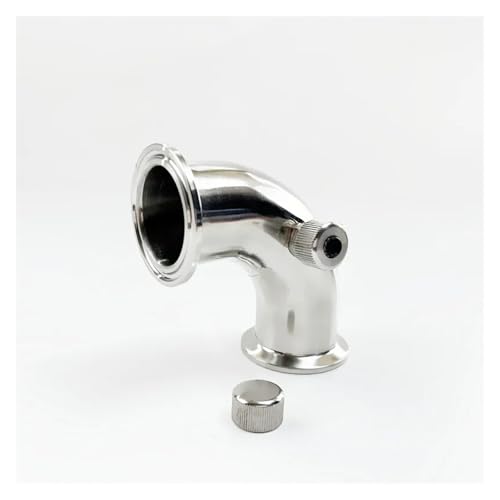Taylor-MadeAK
New Member
At Percival's request, here is a Brewday thread about making sake. A full-blown Taylor-MadeAK guide will be written about this when/if I am satisfied with the results of this little experiment, but for now I'll keep this thread going as a sort of ongoing log of how this first try is progressing, kept in addition to my written log.

For those of you who don't know about this style of sake, you can read about it here. This is a very difficult style of sake to find outside of Japan, however, so good luck on finding a commercial sample to taste prior to making it yourself. I certainly can't find a bottle of it here in Anchorage, AK. :cry:
Okay, there really isn't much to be said at this point, but I'll start with the recipe:
10.00 lbs Short Grain Rice
04.75 cup Koji (normal aspergillus oryzae stuff)
01.25 cup Red Koji, aka "Red Yeast Rice" (monascus purpureus, called beni-koji in Japan)
02.00 gal Water (chlorine and iron free)
00.75 tsp Yeast nutrient
01.00 pn Epsom salt
01.25 tsp Morton salt substitute
01.00 ea White Labs WLP705 Sake yeast (Japanese #7 strain)
This is, of course, my usual sake recipe and I'll be following my usual method. The catch is I've replaced 20% of the koji with red beni-koji, which is where the red color that akaisake is named for comes from. Click the link if you want to read up on the stuff, evidently there are some interesting health benefits that caused the FDA to ban the sale of this substance in the United States. If you live in a city with a strong Chinese presence (I'm looking at you, California!), you might be able to find some at a Chinese medicine shop. For my part, I had to ask a friend who lives in Singapore to send me some.
If this works out, then I'll order more to possibly do some experiments on propagating the monascus pupureus organism.
So, here I am at the beginning of the batch. To make measuring easier, I just mixed the beni-koji in with my just finished batch of kome-koji (you can learn how to make that here:

Half a cup of this koji mixture was added to my sanitized fermenter along with 2.5 cups of water with the yeast nutrient and epsom salt mixed in. I'd love to show you a picture of that, but my camera just wouldn't take a clear picture of it. This mixture, the beginning step of moto was left to stand overnight. The next day, 1.5 cups of rice were rinsed, soaked, steamed, and then added to the fermenter:

This is allowed to stand at room temperature (~72ºF) for two days, during which time the rice will absorb all of the enzyme-rich liquid that it was added to, then let go of it again as the a-amylase enzymes act to saccharify the amylose in the rice. After 48 hours there is still some starch in there, but there is now a whole lot of sugar. Perfect for a yeast starter!
Time to add the yeast:


Just like any other fermentation, there's a lag phase associated with this step. The moto rests in the icebox overnight to encourage any lactobacillus to go dormant, then it comes back out the next day and allowed to warm up to ambient room temperature again. The moto gets stirred twice a day for 3 days, then once a day for 3 more days. By the second day, we're beginning to see signs of fermentation as the yeast take hold:

And now you are current with where I am on this batch. :thumb:

For those of you who don't know about this style of sake, you can read about it here. This is a very difficult style of sake to find outside of Japan, however, so good luck on finding a commercial sample to taste prior to making it yourself. I certainly can't find a bottle of it here in Anchorage, AK. :cry:
Okay, there really isn't much to be said at this point, but I'll start with the recipe:
10.00 lbs Short Grain Rice
04.75 cup Koji (normal aspergillus oryzae stuff)
01.25 cup Red Koji, aka "Red Yeast Rice" (monascus purpureus, called beni-koji in Japan)
02.00 gal Water (chlorine and iron free)
00.75 tsp Yeast nutrient
01.00 pn Epsom salt
01.25 tsp Morton salt substitute
01.00 ea White Labs WLP705 Sake yeast (Japanese #7 strain)
This is, of course, my usual sake recipe and I'll be following my usual method. The catch is I've replaced 20% of the koji with red beni-koji, which is where the red color that akaisake is named for comes from. Click the link if you want to read up on the stuff, evidently there are some interesting health benefits that caused the FDA to ban the sale of this substance in the United States. If you live in a city with a strong Chinese presence (I'm looking at you, California!), you might be able to find some at a Chinese medicine shop. For my part, I had to ask a friend who lives in Singapore to send me some.
If this works out, then I'll order more to possibly do some experiments on propagating the monascus pupureus organism.
So, here I am at the beginning of the batch. To make measuring easier, I just mixed the beni-koji in with my just finished batch of kome-koji (you can learn how to make that here:

Half a cup of this koji mixture was added to my sanitized fermenter along with 2.5 cups of water with the yeast nutrient and epsom salt mixed in. I'd love to show you a picture of that, but my camera just wouldn't take a clear picture of it. This mixture, the beginning step of moto was left to stand overnight. The next day, 1.5 cups of rice were rinsed, soaked, steamed, and then added to the fermenter:

This is allowed to stand at room temperature (~72ºF) for two days, during which time the rice will absorb all of the enzyme-rich liquid that it was added to, then let go of it again as the a-amylase enzymes act to saccharify the amylose in the rice. After 48 hours there is still some starch in there, but there is now a whole lot of sugar. Perfect for a yeast starter!
Time to add the yeast:


Just like any other fermentation, there's a lag phase associated with this step. The moto rests in the icebox overnight to encourage any lactobacillus to go dormant, then it comes back out the next day and allowed to warm up to ambient room temperature again. The moto gets stirred twice a day for 3 days, then once a day for 3 more days. By the second day, we're beginning to see signs of fermentation as the yeast take hold:

And now you are current with where I am on this batch. :thumb:























![BREWING THERMOMETER STICKERS ACCURATELY MONITOR FERMENTING BEER & WINE LIQUID TEMPERATURES 5PCS HOME BREW SPIRITS WINE LCD ADHESIVE [US]](https://m.media-amazon.com/images/I/311DDjo2X3L._SL500_.jpg)


































